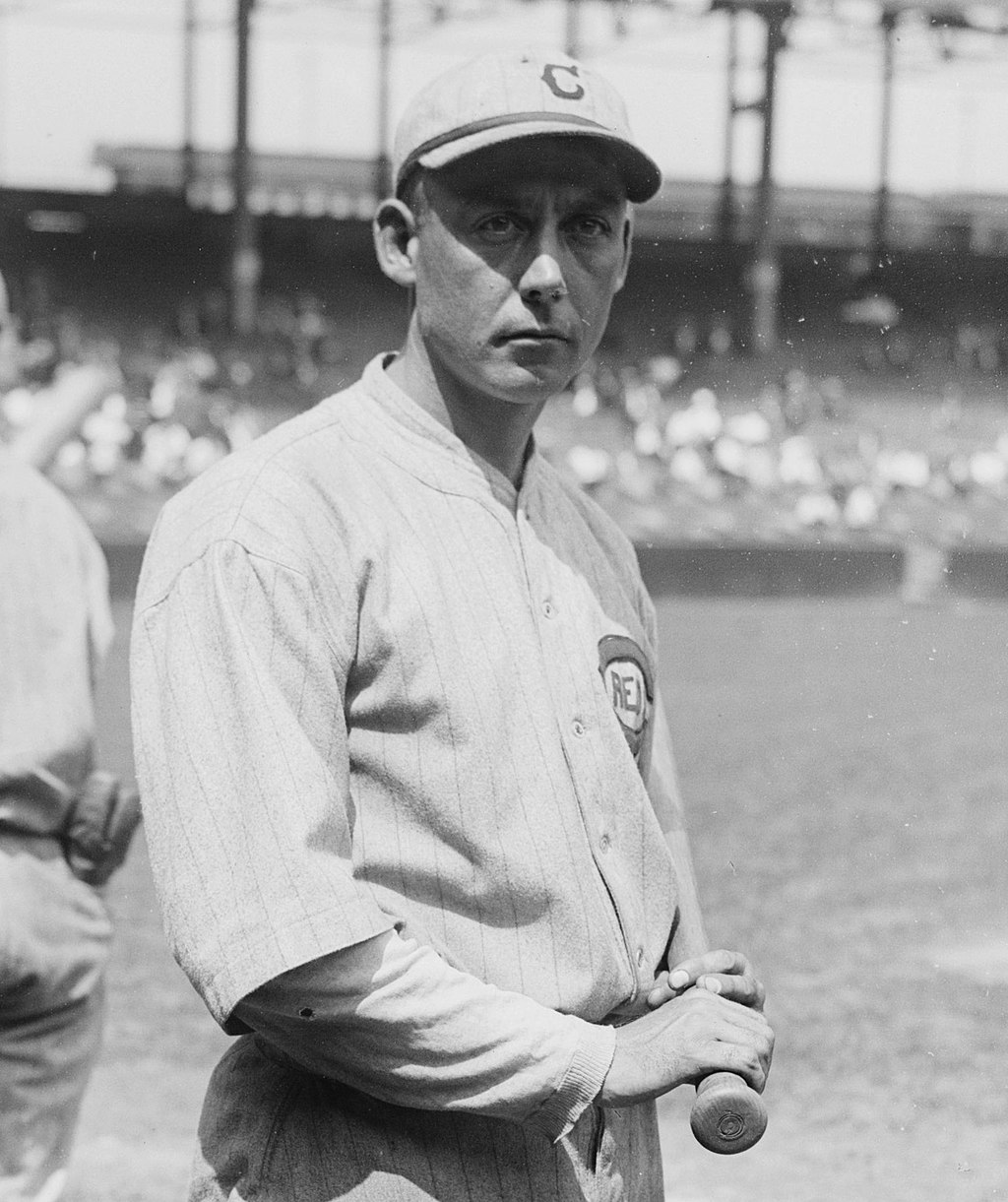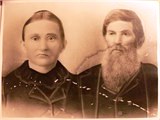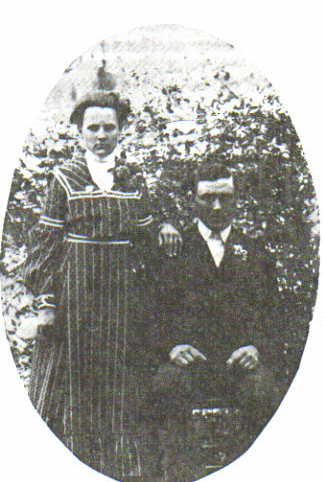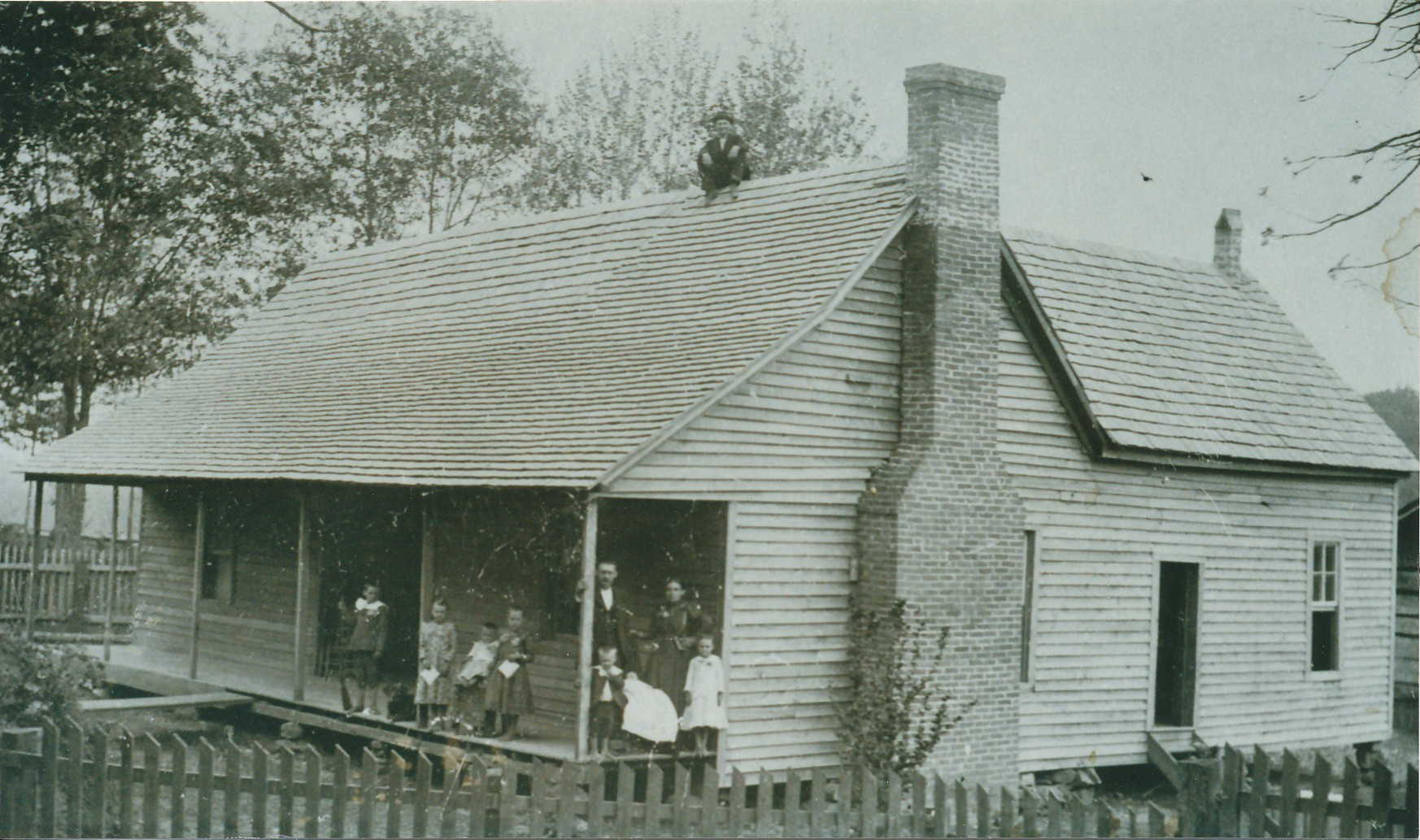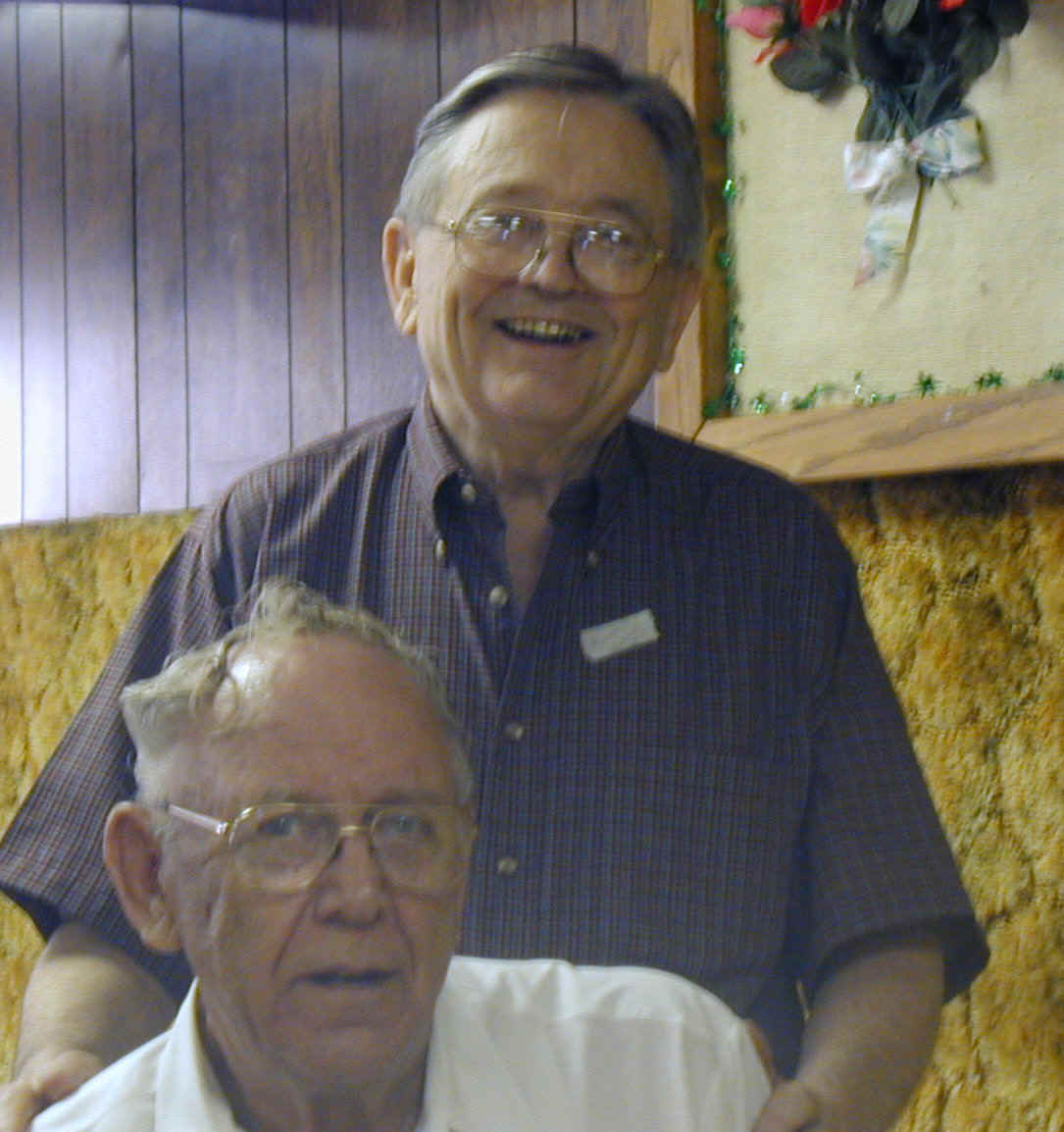Gilbert Gulbrand Sorenson was born 12 Jan 1876, the third son of Gunnard and Annie Sorenson, on the family farm in Kandota Township, Todd County, MN. Gulbrand was named after his Norwegian uncle, living in Ulensaker, Norway. The family spoke Norwegian at home, worshipped in Norwegian in church (initially the small Kandota church built by his father and neighbors, later Long Bridge Lutheran Church on the U-trail, four miles from the family home.)
Gilbert and his siblings did go to school, but for Gilbert is lasted only about four years. He was needed by his parents to work the family farm, which slowly grew from the initial homestead on 160 acres up to nearly a full section of land acquired by the time Gilbert turned sixteen years of age.
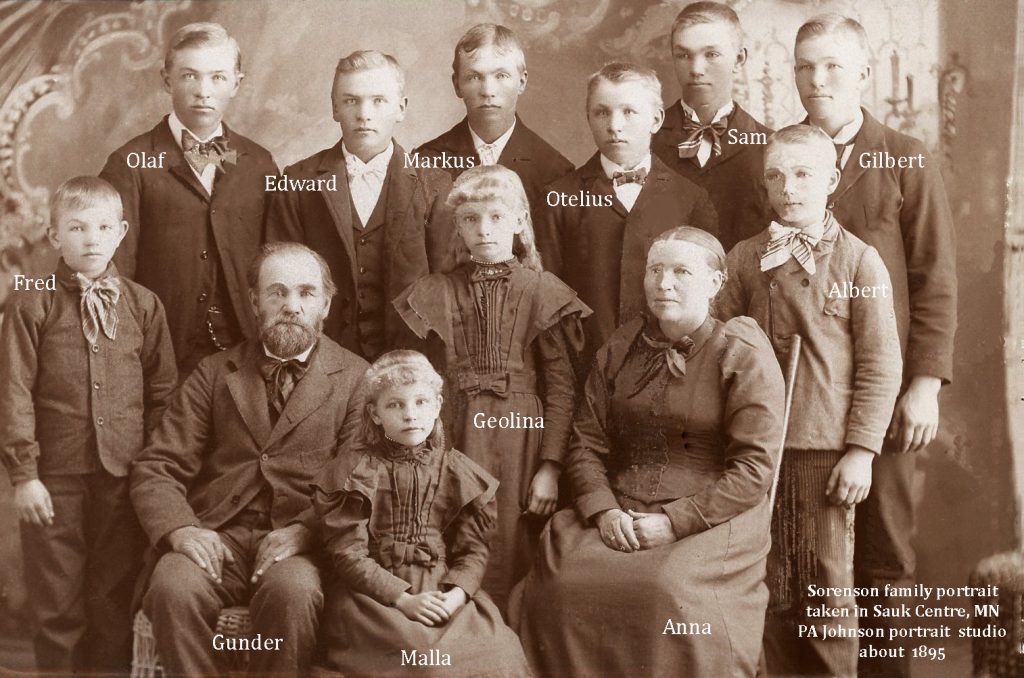
The Sorenson family was raised in a small house, likely poorly insulated and heated, without internal plumbing or modern amenities. The children were likely crowded into a single small room at night. The greatest family tragedy was tuberculosis, with Otelius, Markus and Albert all succumbing by the age of 30 to this chronic progressive respiratory illness. None of the children succumbed to historically common childhood illnesses such as diphtheria, scarlet fever or influensa.
The Sorenson sons worked hard on the farm, clearing land, growing crops such as corn, oats and hay for the livestock, milking the cows, tending the pigs and chickens, picking rocks in the field each spring. In winter, there was less to do. Gunnard and the boys would chop wood, load up a sled and pull the sled with horses across Sauk Lake to nearby Sauk Centre. A full load of wood was worth a dollar in those times when cash was scarce. The family surely ate well, with fresh produce from the garden, wild berries in the woods, fish in nearby Fairy and Sauk lakes, meat from both hunting and livestock. Deer, squirrel, fox, rabbit and wolf inhabited the wooded areas in those days.
In the 1880 census, the Sorenson family is listed on the farm in Kandota with sons Samuel, Olaf, Gilbert, Marcus and Edward.
In the 1885 Minnesota Territorial Census, the Sorenson family is listed in Kandota township with Gunder, Anna, Samuel, Olaf, Gilbert, Marcus, Edward, Otelius, Albert and Hannah.
Like the remainder of his siblings, Gilbert was confirmed at Long Bridge Lutheran Church 14 Jun 1891. His graduating grade was daarlig (Equivalent to a D). This likely was at least partly a reflection of his limited formal education but also surely reflected a certain lack of effort on Gilbert’s part.
In the 1900 census, Gilbert farmer and Edward (partner) are living on the farm adjacent to his parents. I believe that this is the 40 acre parcel north of O. Trones and south of Gunder and Anna. Ingeborg Larson, 22 years, arrived 1896 from Norway, is listed as a boarder.
Gilbert’s father, Gunder Sorenson died of sepsis related to an abscessed tooth 5 Aug, 1905. He was staying in a hotel room in Long Prairie, either waiting for care or post care from the local dentist. There were no antibiotics in those days and thus no effective treatment for sepsis. Gunder was 69 years of age.
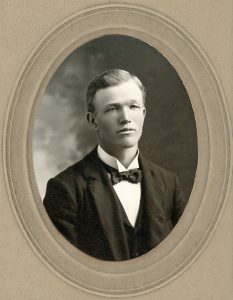
Gilbert Sorenson photographed in Sauk Centre prior to his marriage and after the death of this father Gunder.
Gilbert Sorenson (32) married Anna Katrina Hanson (30) 11 Dec, 1907 in Little Falls, Morrison County, MN. It was a trip of 45 miles from Kandota Township, north to Long Prairie and then east to Little Falls, MN. Gunder Sorenson’s sister, Karen Sorenson, immigrated to Minnesota from Ullensaker, Norway and settled in Swan River Township. She married a Danish immigrant, Rasmus Peder Larsen. Their daughter, Augusta Larsen, married James Hanson, Anna’s little brother. Gilbert Sorenson and Annie Hanson, the sister-in-law to ‘Gustie’ Larsen, both ‘old maids’ of a sort, were married and settled on the farm in Kandota Township, Todd Co.
Anna Kristine Hanson (4 Aug 1877 – 26 Apr 1952) is the first child born of the union of Hans Christian Hansen (Nov 1845 – Sept 1906) and Anna Katrine Knudsen (31 Dec 1844 – after 1900) married 10 Jun 1876 in Morrison County. Anna was married previously in Denmark and traveled to Morrison County with her three sons, Jacob, Neils and George (Jens) Wolters. Anna Kristine was baptized in the Delavan congregant book 6 Aug 1877 (faddere Rasmus Hansen, Jens Christiansen, Christen Hansen, Petrene Hansen). In the Little Falls census, father Hans C Hansen is listed as an assessor in Swan River Township, an elected position. In the 1880 US census, the family is living on the farm In Swan River, Morrison County, MN. The three boys, born in Denmark, are attending school. Ana K (3) and Hansine A (10/12) daughters are listed. In the 1900 census, Hans, Anna, George Wolters (26), Anna (22), James 16 and John 14 are listed. Both Hans and George are naturalized US citizens in the census. The family attended the Evangelical Lutheran Church in Delavan,
In the 1910 census, Gilbert and Annie Sorenson are living on the farm with oldest son Gilman. They are living next to Edward and Hannah (Flan) Sorenson and daughter Cora.
In the 1920 census, the Sorenson family remains on the farm in Kandota Township, Todd County, Minnesota. Gilbert and Annie, Harry 11, Alice 9, Carrie 7, Leonard 6 and Albert 4. By this time, the remaining Sorenson farm has passed into new ownership, including Alfred Sorenson’s quarter section, which he lost to the bank after he rebuilt his home (destroyed in a tornado), taking out a mortgage to finance the construction.
The family attended Long Bridge Lutheran Church, four miles up the road. Each Sunday the kids attended both Sunday school and church services. When the roads were clear, they rode up in a Model T ford. In the winter, a team of horses was hooked up to the sled. Gilbert stood up on the front and bore the brunt of the cold Minnesota winter, where the thermometer could dip to forty below zero. Anna and the children sat in the back, in the grain box, wrapped up in blankets. The children attended catechism for six weeks each summer.
It was our Danish relatives that first made the move to Washington State. Rasmus Peder Larsen moved to Kennewick, Benton CO, WA. At the time of his death in 1926, he was living with son, Louis Larsen, born in Denmark in 1873, union of Rasmus and his first wife. Both father and son were blacksmiths.
My grandfather, Albert Sorenson is my primary source for the family move to Spokane, Washington. There was no one more excited than Gramps when his parents decided to move to Spokane, Washington, in search of meaningful employment in 1927 or 1928. Gilbert had an auction at the farm, selling the livestock, farm equipment and personal property. He traded in the Model T for an Oldsmobile. “We traveled in a ’25 Olds with a trailer out back.” They had to navigate the vehicle at twenty-five miles per hour over washboard roads for seven days. They rarely made more than two hundred miles a day. “Each night we pitched a tent for Mom, Dad and the girls. We had the car fixed up so that the boys could sleep in the car. Since there were seven of us, Len and I would switch off sitting on a milk can in the back. Going through the mountains, whenever a truck came, we had to stop and wait, since by the time it made the corner the rear of the trailer was on the inside of the road. It made for quite a trip!”
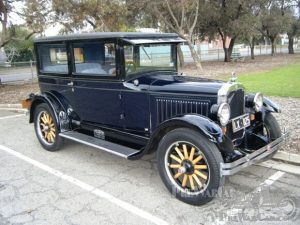
They stopped at Coeur D’Alene first. Anna’s half brother, Nels Wolters, worked in the sawmill. Nels Walters was married to Rasmus and Karen’s oldest daughter, Mary Larsen, Gustie’s older sister. Gramps and Len stayed there for a couple of weeks while the rest of the family went on to Spokane to find a place to live.
Anna’s sister-in-law, Gustie Hansen (her husband, Annie’s brother James Hansen, had passed away in Minnesota in 1923), put up the family. At the time of her father’s death in 1926 in Kennewick, WA, she lived in Swan River Township, Morrison CO, MN. After Rasmus’ death, the widow moved with her entire family to Spokane, perhaps taking advantage of her father’s inheritance. She was head of household with seven children (my grandfather remembered Myrtle, Eva, Harry, Lester, Stella, Dorothy). Gilbert found work in a sawmill and the family settled down.
This was an opportunity for the younger Sorenson children to get a more formal education. Al attended Havermill Junior High School where he excelled in mathematics and sports.
In the 1930 census, the family is living in Spokane, Washington. Harry, Leonard and Albert are listed, Alice 19 and Carrie 17 are not living with the family. Alice Jeannette Sorenson and Melvin Lunde married the following year 7 Sep, 1931. Carrie Olga Sorenson married Franke Keevy 1 Oct, 1932 also in Spokane.
Gilbert Sorenson’s work at the sawmill was not as steady or financially rewarding as he had hoped. The country was entering the Great Depression. In addition, he started going lame in one leg due to back problems. Thus in 1931, the family headed back for Minnesota, less Gilman and Alice. Carrie left a boyfriend back in Spokane, Melvin Lunde, and headed back the year after to get married.
From the Sauk Centre Herald 14 Jan 1932: The first real blizzard of the winter is in progress, Oh boy! think what a jolly time for the kiddies. A pretty wedding was solemnized last Tuesday when Miss Cora Sorenson and Mr. Sturi Larson were quietly united in marriage at the bride’s home here. Rev. J. N. Leaf, of the local Lutheran church, tied the knot. The newly weds will make their home on the groom’s farm in Kandota. Christmas bells were silenced by the music from cow bells Wednesday evening when a party of Little Sauk and Kandota musicians, using cowbells, circle saws, pans, etc charivaried Mr. and Mrs. Sturi Larson. The youngsters involved in this roast almost certainly included, Albert and Leonard Sorenson, Bill Trones, Ellen Eklund, Gladys, Geolina and Gilman Sorenson from Little Sauk amongst others.
It was shortly thereafter that Gilbert’s condition worsened. Up until then, he had been able to walk with the help of a cane. One evening, during the three-quarters of a mile walk to Uncle Fred’s place, his second leg went lame. “About a year after we got home, Dad went to the University of Minnesota on account of his back.” It was with the help of the County Commissioner, Bill Halpern, that he was treated, They did surgery on his spinal cord and he became paralyzed from the waist down. I guess it was experimental at the time. I remember all of the doctors coming in a large group. One doctor would stick pins in him, starting below and moving up, until he felt it. It was the cruelest thing. After a year, he came home and Mom took care of him.” On an historical note, Gilbert was probably one of the first patients who had spinal surgery in the world. The University Minnesota pioneered spinal surgery. At the time, no one even knew the anatomy of the intervertebral discs. Were his surgery to take place today, it would be considered routine.
17 May 1933, the Sauk Centre Herald note made of Mrs. Gilbert Sorenson and son Albert, and Clarence Troness (he lived on the neighboring farm to the south), spent the weekend visiting Gilbert Sorenson, who is confined in the University hospital, Mineapolis.
With their father’s paralysis came added responsibilities on the farm. Al and Len were now in charge of running the place. Neither of them had much experience in the fields. They were up early to milk the cows (or at least Gramps was; Len preferred to sleep in). They were each paid fifty cents a day, all Gilbert could afford.
In the winter of 1942, Anna Sorenson was walking to the barn to fetch water from the well. The snow was packed high, and she slipped off the path, apparently hitting her head. She was left paralyzed on her left side, unable to fend for herself. From then on, Len and Albert took turns taking care of their parents, Len in the winter and Albert and Gladys in the summer. The house on Long Lake was cold and drafty. “Len and I took turns taking care of them, for six months at a time. Our house didn’t have heat so we took care of them in the summer (Len occupied Gilbert and Anna’s house). I had to turn Dad four times a day. I remember threshing, running home one mile to turn him at lunch, running back that mile and going back to work.” During the summer, Al and Gladys slept upstairs so their parents could rest comfortably down. A hole in the floor allowed his folks to ring a bell at night in order to get their assistance. Gladys’ Mom, Annie, often came over to help for weeks at a time. This was especially useful after Larry was born, since he suffered from petit mal epilepsy. Grandma recalls episodes when he had spells and fell in the lake, or once fell down the cellar stairs. Luckily, Olaf was there to catch him. One day, Annie fell down the steep stairs and broke her ankle. Gramps and Grandma were left with three invalid parents and two small children to care for! It was as trying a time as they could remember.
Gilbert and Anna Sorenson had five children:
Harry Gilman Sorenson (3 Oct, 1908 – 8 Apr, 1992) married Beatrice Thurman (Claudia and Larry Sorenson)
Alice Jeanette Sorenson (1 May, 1910 – 17 Mar, 2001) married Melvin Lunde (Melvin Eugene, Albert and Eileen Lunde).
Carrie Olga Sorenson (17 Aug, 1911 – 6 Aug, 1995) married Frank Keevy (Linda and Kathleen Keevy).
Leonard Leroy Sorenson (30 Apr, 1913 – 15 Apr, 2002) married Viola Wallin (Sharon Sorenson).
Albert John Sorenson (2 Apr, 1915 – 24 Jul, 1997) married Hattie Gladys Sorenson (Janice and Larry). Please see blog post on Albert Sorenson.
